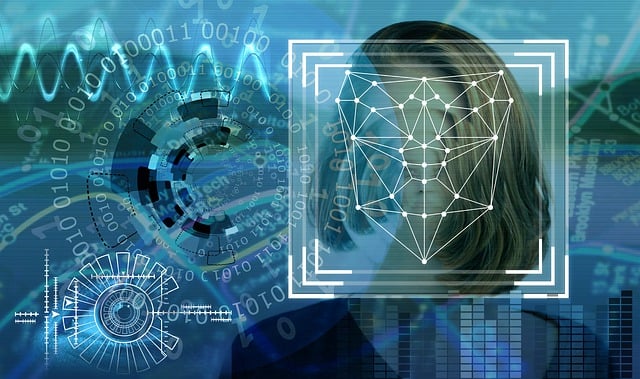Medical imaging for the brain, including CT scans and MRIs, is transforming stroke care. These advanced techniques provide detailed insights into brain health, enabling swift diagnosis of ischemic or hemorrhagic strokes. By revealing subtle changes in brain tissue and blood flow, imaging aids in targeted interventions and improves patient outcomes. Ongoing monitoring through imaging tracks recovery, informs rehabilitation strategies, and enhances long-term functional outcomes for stroke survivors.
Brain imaging technologies play a pivotal role in stroke diagnosis, offering invaluable insights into this devastating condition. Unlocking Stroke Insights explores how advanced medical imaging techniques like MRI and CT scans revolutionize early detection, enabling precise assessment of brain damage. From identifying acute conditions to guiding recovery strategies, these tools are indispensable in navigating stroke care. Discover how the power of medical imaging for the brain transforms patient outcomes and paves the way for more effective treatment plans.
Unlocking Stroke Insights: Power of Medical Imaging for Brain
Unlocking Stroke Insights: Power of Medical Imaging for Brain
In the intricate world of stroke diagnosis, medical imaging emerges as a vital tool, offering profound insights into brain health and functionality. Through advanced techniques like computed tomography (CT), magnetic resonance imaging (MRI), and ultrasound, healthcare professionals gain unprecedented access to visualize and assess the brain’s complex network. These non-invasive methods enable doctors to detect critical information, such as bleeding, blockages, or abnormalities, that may otherwise remain hidden.
By swiftly analyzing brain structures, medical imaging facilitates timely interventions, which are crucial in stroke management. It allows for accurate identification of ischemic or hemorrhagic strokes, guiding targeted treatments and optimizing patient outcomes. Moreover, ongoing monitoring through imaging helps track the progression of the condition, assess recovery, and make informed decisions about rehabilitation strategies.
Early Detection: Brain Scans Revolutionize Stroke Diagnosis
Early detection plays a pivotal role in stroke diagnosis and treatment, and medical imaging for the brain has emerged as a revolutionary tool in this domain. Brain scans, such as magnetic resonance imaging (MRI) and computed tomography (CT), offer unprecedented insight into cerebral activity and structure, enabling healthcare professionals to quickly identify signs of stroke or its precursors.
These advanced imaging techniques can detect subtle changes in brain tissue, blood flow, and inflammation that may be imperceptible through traditional means. By analyzing these scans, doctors can pinpoint the location and extent of damage, facilitating faster and more effective treatment interventions. This early detection not only improves patient outcomes but also reduces potential long-term disabilities associated with stroke.
Advanced Techniques: Enhancing Precision in Stroke Assessment
Advanced techniques in medical imaging for brain have significantly enhanced the precision of stroke assessment. Tools like magnetic resonance imaging (MRI) and computed tomography (CT) scans provide detailed, high-resolution images that capture subtle changes in brain structure and function. These technologies enable healthcare professionals to quickly identify the type and extent of a stroke, differentiating between ischemic and hemorrhagic strokes, as well as pinpointing the exact location affected.
The use of advanced imaging techniques has led to earlier diagnosis and more effective treatment planning. By visualizing the cerebral blood flow, brain abnormalities, and damage caused by a stroke, doctors can make informed decisions about revascularization therapies, such as thrombolysis or endovascular procedures, ensuring optimal patient outcomes.
Navigating Stroke Recovery: The Role of Brain Imaging
Navigating Stroke Recovery: The Role of Brain Imaging
In the acute phase of a stroke, prompt and accurate diagnosis is crucial for effective treatment and managing potential complications. Medical imaging for brain plays an indispensable role in this process. Technologies such as computed tomography (CT) scans and magnetic resonance imaging (MRI) provide detailed, high-resolution images of the brain, enabling healthcare professionals to identify blockages, bleeds, or other anomalies that cause strokes. Unlike traditional methods, these advanced medical imaging techniques offer non-invasive ways to visualize internal brain structures, facilitating swift decision-making and enhancing patient outcomes.
Furthermore, ongoing monitoring through regular brain imaging helps track stroke patients’ recovery progress. It allows healthcare providers to assess changes in brain function, detect potential setbacks, and tailor rehabilitation strategies accordingly. By continuously evaluating the brain’s structure and activity, medical imaging for brain contributes significantly to personalized stroke care, ultimately improving long-term functional outcomes and quality of life for survivors.
Brain imaging has become an indispensable tool in stroke diagnosis, offering precise insights that revolutionize patient care. By leveraging advanced medical imaging for the brain, healthcare professionals can now detect strokes earlier, enabling prompt treatment and enhancing recovery outcomes. As research continues to refine these techniques, the future of stroke management looks brighter, thanks to the transformative power of brain scanning technologies.
